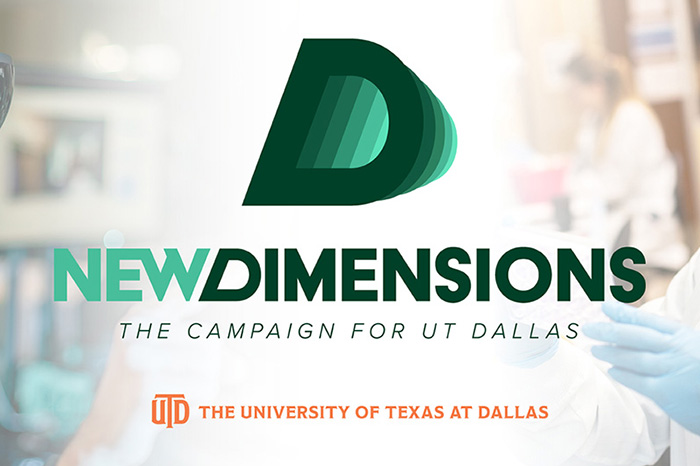
A researcher from The University of Texas at Dallas’ Center for Advanced Pain Studies (CAPS) has drawn inspiration from a 19th-century scientist to pursue a 21st-century solution to migraine pain.
Italian chemist Ascanio Sobrero first synthesized nitroglycerin — an explosive compound — in 1847 and bore a facial scar as a result of his work with the volatile molecule. He tasted it, too, and reported developing a violent, hours-long headache.
Now Dr. Gregory Dussor, Eugene McDermott Professor and department chair of neuroscience in the School of Behavioral and Brain Sciences (BBS), has found a mechanism that might help explain why nitric oxide causes migraines. Dussor is corresponding author of the preclinical study, published March 1 in The Journal of Neuroscience.

“We’ve known for a long time that when you give migraine patients a compound that generates nitric oxide, such as nitroglycerin, it triggers a migraine attack in a very large number of them,” he said. “It’s one of the first pharmacological migraine triggers ever documented, and it’s a robust, consistent phenomenon. But the mechanism is unclear. If we discover what it is, we might have a good drug target.”
Medically, nitroglycerin is a vasodilatory drug approved by the Food and Drug Administration to treat the chest pain caused by coronary artery disease. The body quickly breaks down nitroglycerin to nitric oxide, which causes the smooth muscle in blood vessels to relax, allowing more blood to flow through arteries and veins.
While inhibiting production of nitric oxide has been shown to help with migraine, it also raises blood pressure, which rules it out as a pharmaceutical solution. Dussor and his team instead are investigating peroxynitrite — a reactive chemical that is produced in the body when nitric oxide reacts with other molecules — as a potential migraine cause.
“We have to look at what happens after nitric oxide is produced,” Dussor said. “Can we safely inhibit a relevant pathway?”
In the current study, UT Dallas researchers exposed mice to two common triggers of migraine in humans: repeated stress and a chemical that produces nitric oxide, also called a nitric oxide donor. After neutralizing the peroxynitrite that was produced in the mice, the team observed a decrease in facial hypersensitivity, a preclinical measure of pain. Subsequent research will investigate if targeting peroxynitrite will work safely in humans.
“Our data indicate a novel role for peroxynitrite in contributing to the development and maintenance of pain-like hypersensitivity in this preclinical model of migraine headache and point to a therapeutic target,” Dussor said.
The research has also identified additional effects of peroxynitrite.
“To our knowledge, ours is the first study to demonstrate that peroxynitrite contributes to stress-induced increases in painlike hypersensitivity, neuronal excitability and mitochondrial activity.”
Dr. Gregory Dussor, Eugene McDermott Professor and department chair of neuroscience in the School of Behavioral and Brain Sciences
“To our knowledge, ours is the first study to demonstrate that peroxynitrite contributes to stress-induced increases in painlike hypersensitivity, neuronal excitability and mitochondrial activity — all of which provide a basic framework for how peroxynitrite may be involved in these underlying mechanisms of migraine,” Dussor said.
Jacob Lackovic PhD’22, a former research associate in the Pain Neurobiology Research Group and lead author of the paper, said that one interesting finding was that the male mice exhibited a higher level of mitochondrial dysfunction than did the female mice. Mitochondria are small organelles in cells that turn food into energy.
“We don’t have a clean way to explain this mitochondrial dysfunction, but we do know there is a wide array of sex differences in that organelle in both rodents and humans,” Lackovic said. “Mitochondria also act in different, sex-dependent ways in a wide range of diseases, from cancer to other pain models.”

To learn more about how UT Dallas is enhancing lives through transformative research, explore New Dimensions: The Campaign for UT Dallas.
Lackovic hypothesized that, since mitochondrial DNA is passed down through generations only by the mother, evolutionary differences might account for the higher level of mitochondrial dysfunction in males.
“If female mitochondria are better at adapting to changes, it would make sense that the nitric oxide donor did not affect them as much,” Lackovic said. “More investigation would be needed to confirm that.”
Even as neuroscience researchers continue to hunt for more targets that could provide help to migraine sufferers who do not benefit from current medications, the COVID-19 pandemic has yielded new questions about the interface between migraine pathology and the coronavirus.
“About 30% of those infected ended up with long COVID, which has three principal features: fatigue, brain fog and headache,” Dussor said. “This viral infection has worsened people’s migraines and caused migraines in people who didn’t have them before. We need new drugs that target different mechanisms to get relief for all patients. Peroxynitrite gives us another therapeutic angle to explore.”
Dussor believes that migraine is a much more diverse disorder than the “with or without aura” distinction that science currently employs. Elucidating the various categories and mechanisms causing attacks is key to finding treatment for most people.
“I don’t think that there will ever be a drug that works for all people with migraine,” he said. “Until we know better which type a person has, it’s hard to know what therapeutic to give that person.”
Other BBS-affiliated authors of the paper included Dr. Ted Price BS’97, Ashbel Smith Professor of neuroscience and CAPS founding director; Dr. Michael Burton, Fellow, Eugene McDermott Professor and assistant professor of neuroscience; and Vivekanand Jeevakumar MS’11, PhD’15, now a scientist at Janssen Research and Development.
Funding support came from two grants (R01NS104200, R21NS104990) from the National Institute of Neurological Disorders and Stroke, a component of the National Institutes of Health.
